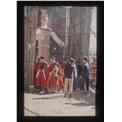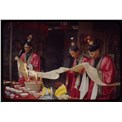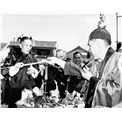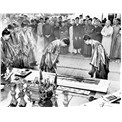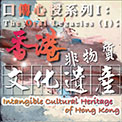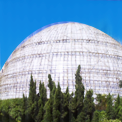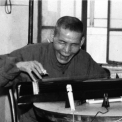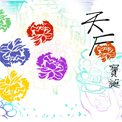-
History & Society
- Education in Pre-war Hong Kong
- History of Taikoo Sugar Refinery
- Hong Kong Products Exhibition
- Local Festivals Around the Year
- Post-war Industries
- Pre-war Industry
- The Hong Kong Jockey Club Archives
- Tin Hau Festival
- Memories We Share: Hong Kong in the 1960s and 1970s
- History in Miniature: The 150th Anniversary of Stamp Issuance in Hong Kong
- A Partnership with the People: KAAA and Post-war Agricultural Hong Kong
- The Oral Legacies (I) - Intangible Cultural Heritage of Hong Kong
- Hong Kong Currency
- Hong Kong, Benevolent City: Tung Wah and the Growth of Chinese Communities
- The Oral Legacies Series II: the Representative List of the Intangible Cultural Heritage of Hong Kong
- Braving the Storm: Hong Kong under Japanese Occupation
- A Century of Fashion: Hong Kong Cheongsam Story
Geography & EnvironmentArt & Culture- Calendar Posters of Kwan Wai-nung
- Festival of Hong Kong
- Ho Sau: Poetic Photography of Daily Life
- Hong Kong Cemetery
- Sketches by Kong Kai-ming
- The Culture of Bamboo Scaffolding
- The Legend of Silk and Wood: A Hong Kong Qin Story
- Journeys of Leung Ping Kwan
- From Soya Bean Milk To Pu'er Tea
- Applauding Hong Kong Pop Legend: Roman Tam
- 他 FASHION 傳奇 EDDIE LAU 她 IMAGE 百變 劉培基
- A Eulogy of Hong Kong Landscape in Painting: The Art of Huang Bore
- Imprint of the Heart: Artistic Journey of Huang Xinbo
- Porcelain and Painting
- A Voice for the Ages, a Master of his Art – A Tribute to Lam Kar Sing
- Memories of Renowned Lyricist: Richard Lam Chun Keung's Manuscripts
- Seal Carving in Lingnan
- Literary Giant - Jin Yong and Louis Cha
-
History & SocietyGeography & EnvironmentArt & Culture
-
View Oral History RecordsFeatured StoriesAbout Hong Kong Voices
-
Hong Kong MemoryThe Oral Legacies Series II: The Representative List of the Intangible Cultural Heritage of Hong KongRecently Visited
The Taoist Ritual Tradition of the Zhengyi School in the New Territories
The Zhengyi Taoist ritual tradition of the New Territories mainly comes from Dongguan and Xin’an in Guangdong Province, with the liturgical zhai (retreat) and Jiao rituals beginning to gain popularity in the villages of the New Territories around the mid-19th century. Their priests won the trust of the village elders and residents because they could blend in with the local community through their nonmonastic, “living at home” lifestyle. They served as their long-trusted medium between mortals and deities. Through hands-on guidance from veteran mentors to apprentices, or from father to son, the Zhengyi Taoist ritual traditions are passed down from generation to generation. The traditional Zhengyi ritual practices are typically seen in the various liturgical services such as Jiao Festivals, installation of altar figures, consecration of ancestral halls and temples, reopening of temples after renovation, and ritual for tun fu (storing tallies), etc. The liturgical services have therefore been largely sustained.
The Zhengyi Taoist priests of the New Territories adhere to the traditional practice of “complying with the ritual rules”, that is to say, they would follow the preset steps in the ritualistic programme of chanting the scriptures, intoning the mantra, reciting the incantations, pacing the Dipper, writing the talismans, and playing Taoist music. Choice of ritual texts is picked according to the types of rites and purposes of the occasion such as to keep the living safe and the deceased contented, or to guard the land in safety and in peace, or to ward off disasters and expel plagues, etc. The priests involved in the ritual play different roles according to their seniority and experience, viz.:
• Gaogong (High priest) – one who knows the rites and rituals through and through, is technically sound and can therefore be the master of ceremony and issue papers;
• Dujiang (Chief cantor) – one who controls the pace of the proceedings during the ceremony with percussive points, and is called “Pacer”, also colloquially called “Second Position”;
• Zhitan (Assistant cantor) – one who plays the cantor role, droning “nahm mouh”, chanting verses, and serves as lead singer for the congregation. Also colloquially called “Third Position” ; and
• Jiaoshi (Taoist musician) – one who plays the suona and big gong.Photos
Copyright © 2012 Hong Kong Memory. All rights reserved.






